DEFINITION OF CELL CYCLE
The cell cycle is a series of events that take place in a cell leading to duplication of its DNA and division of cytoplasm & organelles to produce two daughter cells. In other words, the cell cycle is an ordered series of events that involve cell growth & cell division to produces two new daughter cells. Although cell division occurs in all organisms, it takes place very differently in prokaryotes & eukaryotes. Here, I will tell you only about the eukaryotic cell division.
CELL DIVISION
Basically, cell division is a process by which new cells arise from other living cells. It doesn’t stop with the formation of the mature organism and also continues in certain tissues throughout life
CELL CYCLE PHASES
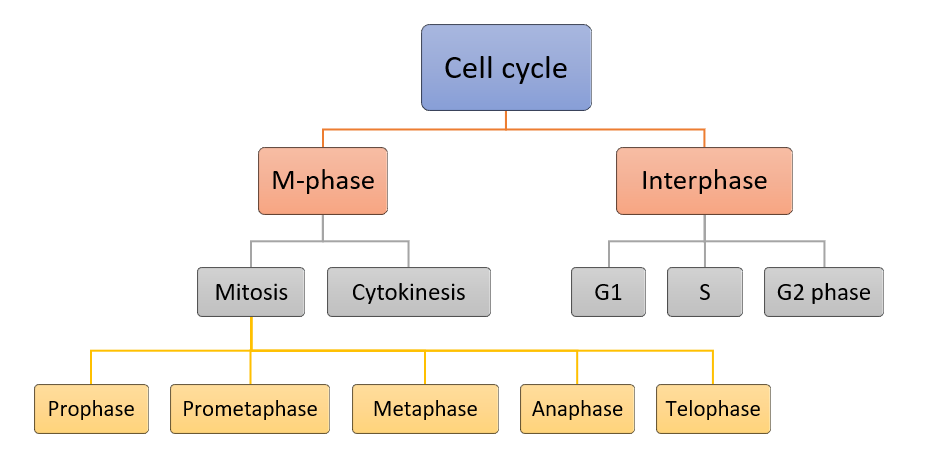
Cell cycle has two major phases:
- M-phase: It includes mitosis and cytokinesis.
- Mitosis: in mitosis, duplicated chromosomes in the nucleus are evenly divided between the cells.
- Cytokinesis: During it, the entire cell divides into two daughter cells.
- Interphase: it is a time when the cell grows & engages in diverse metabolic activities. In other words, it is the period between cell divisions.
Now, let’s study each phase in detail below…
Interphase
Interphase is the phase in which the cell prepares for division by undergoing both cell growth and DNA replication. You can also call it as the resting phase of the cell cycle. Altogether, it occupies around 95% time of the overall cycle. Interphase consists of at least three distinct stages during which the cell grows, produces new organelles, replicates its DNA, and finally divides. These stages are as follows:
- G1 phase or Gap 1 (cell cycle longest phase) – In the G1 phase, the newly formed daughter cell grows. During G1, the cell is metabolically active, duplicate its organelles and cytosolic components.
- S phase (Synthesis phase) – DNA replication takes place during this phase. Duplication of the chromosomes involves the accurate copying of the entire DNA molecule as well as the chromatin proteins that associate with the DNA. Each DNA replicates to form two sister chromatids held at the centromere. Since many nucleotides synthesized during this phase, it requires intensive energy.
- G2 phase (Gap 2) –During this phase, enzyme and protein synthesis occurs. Also, ATP produces in large amounts and centriole replicates. G2 phase ends when mitosis begins.
Summary of interphase
An active eukaryotic cell will undergo through G1, S phase (synthesis phase), G2, and finally mitosis as it grows and divides. After completing the cycle, the cell either starts the process again from G1 or exits the cycle through G0. Altogether, interphase occupies around 95% time of the overall cycle.
- G1 phase: during G1, cell increases in size and duplicates its cellular content
- S phase: here, DNA replication occurs and chromosomes replicate.
- G2 phase: cell prepares for cell division
M phase
The cell cycle of Mitosis
The name ‘mitosis’ comes from the Greek word
In mitosis, it results in two daughter cells each having the same number of chromosomes as the parent nucleus. Mitosis maintains the chromosome number & generates new cells. Either haploid or diploid cells can undergo mitosis. Haploid mitotic cells are present in fungi, plant gametophytes, and in a few animal cells. The purpose of mitosis is the growth of the organism. Moreover, it also replaces the worn-out cells.
Mitosis is further divided into five sub-phases, which are:
- Prophase,
- Prometaphase,
- Metaphase,
- Anaphase,
- Telophase.
Prophase
Emphatically, it occupies almost half of the mitotic cycle. It is the first stage of mitosis. During prophase, the duplicated chromosomes prepare for segregation and the mitotic machinery is assembled. Prophase occurs in the following steps:
Formation of mitotic chromosome
Chromosome compaction or chromosome condensation occurs during early prophase. Chromosome condensation is a process by which cell converts chromatin fibers into much shorter, thicker structures. However, it does not alter the nature of chromatin fiber. The process of chromosome compaction is assisted by the enzyme condensin and topoisomerase II. As a result of compaction, the chromosomes of the mitotic cell appear as distinct, rod-like structures. At this stage, each replicated chromosome consists of two identical chromatids held together by a structure known as a centromere. The centromere is the residence of highly repeated DNA sequences that serve as the binding sites for specific proteins.
Formation of mitotic spindle
As the cell progresses into mitosis, the microtubules of the cytoskeleton undergo sweeping disassembly. Cytoplasmic changes lead to the development of mitotic spindle.
Firstly, microtubules appear in a “starburst” arrangement or aster around each centrosome during early prophase. After that, the centrosomes separate from one another and move to opposite sides of the nucleus. Thus, they serve as the two poles of the mitotic spindle. Following mitosis, one centrosome will be distributed to each daughter cell.
Dissolution of nuclear envelope and positioning of cytoplasmic organelle
In higher eukaryotes, the end of prophase corresponds to the breakdown of the
Some of the membranous organelles of the cytoplasm remain relatively intact through mitosis. These include mitochondria, lysosomes, peroxisomes, and chloroplasts.
Prometaphase
The dissolution of the nuclear envelope marks the start of the second phase of mitosis – prometaphase. Indeed, it is a transition period between prophase & metaphase. During prometaphase, the microtubules of mitotic spindle attach to the kinetochores of condensed chromosomes. The kinetochores of sister chromatids are oriented on the opposite side of chromosomes. In addition, the chromosome shuffle back & forth until they eventually align on the metaphase. At this stage, the cells have reached the metaphase.
Metaphase
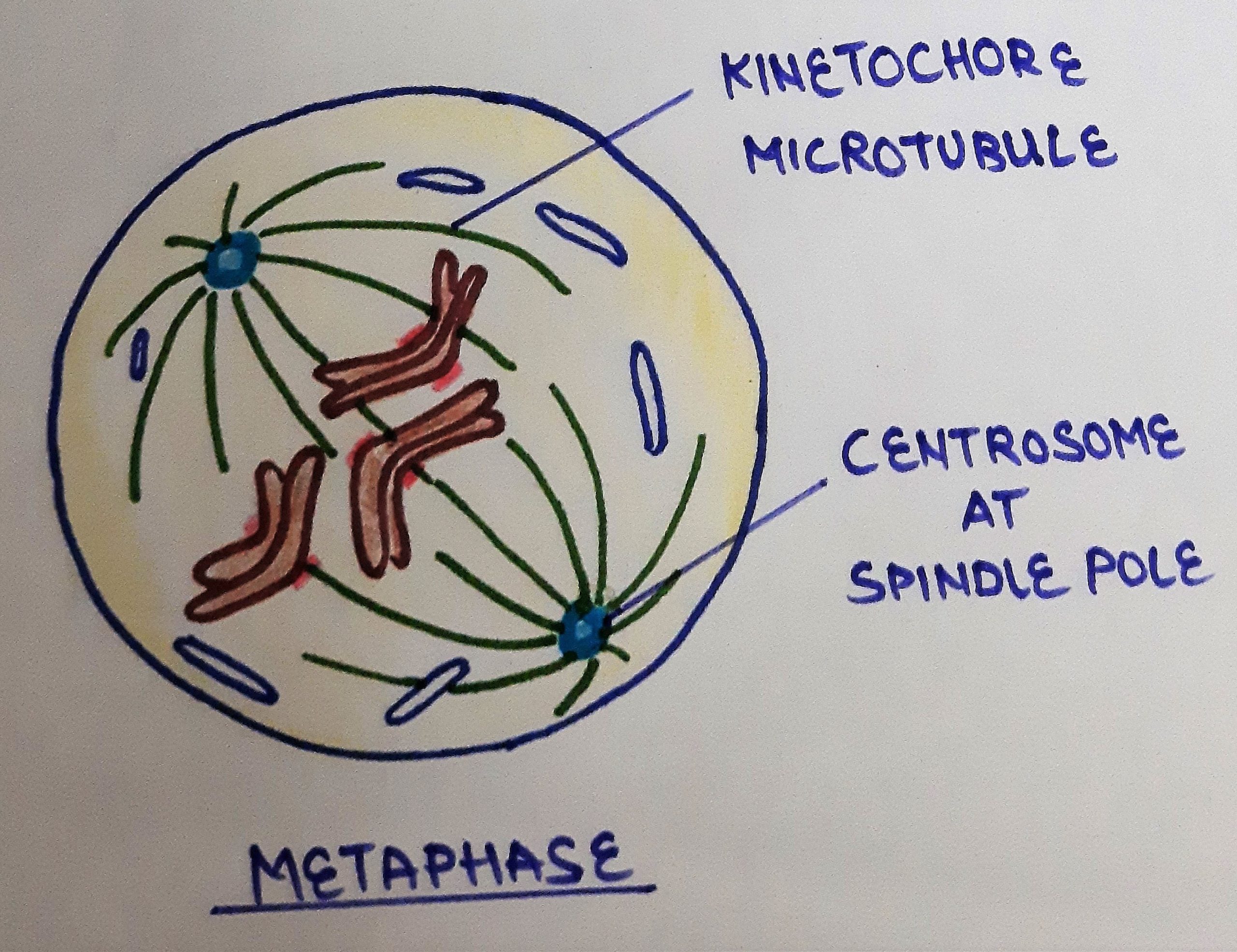
Metaphase accounts for approximately 4% of the cell cycle’s duration. During metaphase, the chromosomes aligned at the equator of the spindle, mid-way between the spindle poles. The plane of alignment of the chromosomes at metaphase is referred to as the metaphase plate. It is an imaginary line that is equidistant from the two centrosome poles. line The kinetochore-microtubule attach sister chromatids to opposite poles of the spindle.
Anaphase
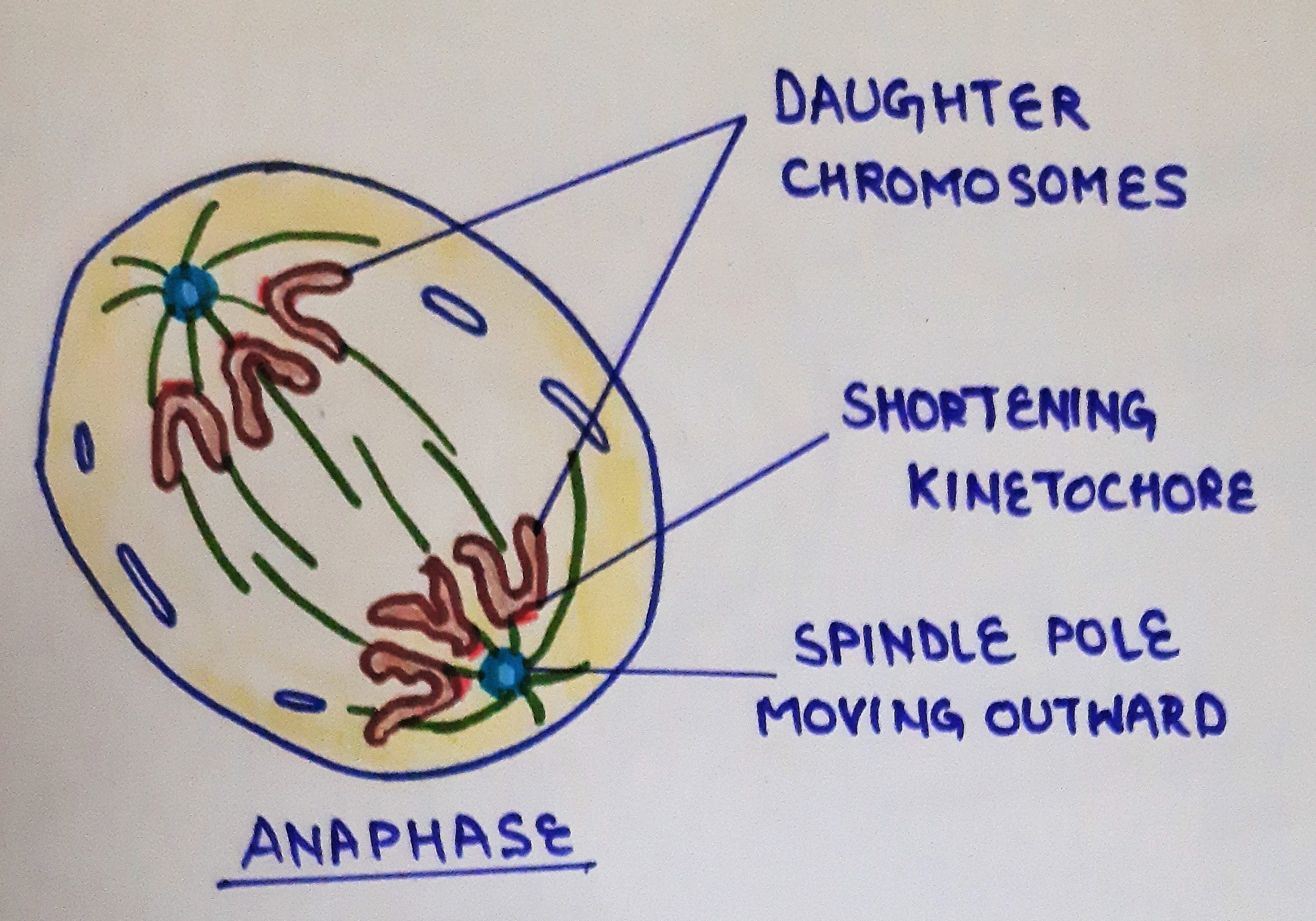
It is the shortest stage of mitosis. During anaphase, the chromosomes of the metaphase plate split in synchrony, and the chromatids start migrating towards the spindle pole. This movement of chromosomes causes a shortening of the chromosomal microtubule. The primary difference in microtubule dynamics between metaphase and anaphase is that subunits are added to the plus ends of microtubules during metaphase whereas subunits are lost from the plus ends during anaphase, resulting in shortening of the chromosomal fibers.
Telophase
This one is the final stage of mitosis. During telophase, the chromosome tends to collect near their respective poles. The mitotic spindle disassembles, the nuclear envelope reforms, and the chromosomes uncoil. Meanwhile, the division of the cytoplasm starts with the contraction of the contractile ring.
Cytokinesis
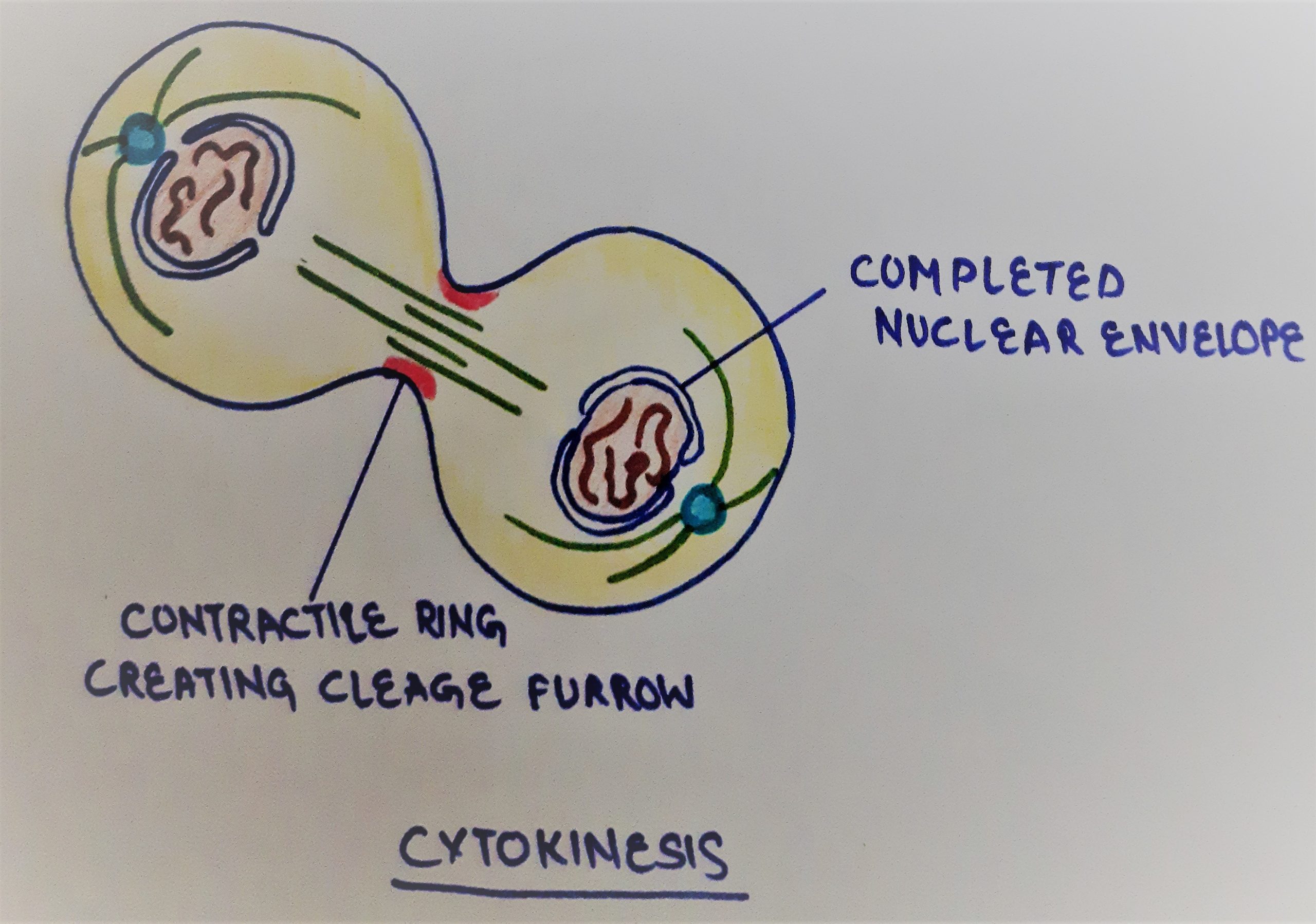
Cytokinesis usually begins just as mitosis ending, with a little overlap. The cell divides into two daughter cells by a process called cytokinesis. It occurs at the former equator. During cytokinesis, the cytoplasm of a single cell divides into two daughter cells. In cytokinesis, the spindle apparatus partitions and transport duplicated chromatids into the cytoplasm of the duplicated daughter cells. Cytokinesis in plant cells is significantly different from that of
Duration of the Cell Cycle
The time required to complete certain events varies greatly from one cell type to another, even in the same organism. A typical human cell might
The G1 phase will continue for approximately 11 hours, S phase will continue for 8 hours, G2 phase for nearly 4 hours. The complete process of mitotic cell division (M phase) is nearly 1-1.5 hours. Prophase is the longest among six phases of mitosis i.e., 30-60 minutes. While metaphase is 2-10 minutes, anaphase 2-3 minutes and telophase is 3-12 minutes long. Some cells may divide faster than human cells whereas some cells may take more time to complete an entire cell cycle. For example “budding yeast” will complete the entire cell cycle (4 stages of the cell cycle) in about 90 minutes.
How cell cycle is regulated?
It is an internal process to control the rate of cell growth and division. Cell cycle regulation is a necessary process because, without cell cycle regulation, cells could grow in an uncontrolled manner and causing great problems for the host organism.
The progression of cells through the cell cycle is controlled by checkpoints at different stages. Now, you must be thinking that what are checkpoints? A checkpoint is one of several points in the eukaryotic cell cycle at which the progression of a cell to the next stage in the cell cycle can be halted until conditions are favourable. In multiple cell division, it is most important that each new daughter cell must receive a complete and accurate copy of the genome. Moreover, chromosomes must be duplicated once and only once before mitosis.
For the full article on Cell Cycle control system, check here: Cell cycle regulation and checkpoint
Cell cycle of Meiosis
Meiosis is a specialized kind of cell cycle that reduces the chromosome number by half, resulting in the production of haploid daughter cells. In addition, Meiosis includes two sets of divisions that distribute the haploid set of chromosome and ultimately results in four cells.
Read full article here….Meiotic cell cycle
Sources and links
Molecular Biology of the cell, 5th edition, Bruce Alberts, Alexander Johnson, Julian Lewis, Martin Raff, Keith Roberts, and Peter Walter, chapter no. 17.
Karp’s cell and molecular biology: concepts and experiments 8th edition by Janet Iwasa and Wallace Marshall, chapter 14.
The cell: A molecular approach by Geoffrey M Cooper, chapter 16, the cell cycle.
https://www.toppr.com/guides/biology/cell-cycle-and-cell-division/cell-cycle/
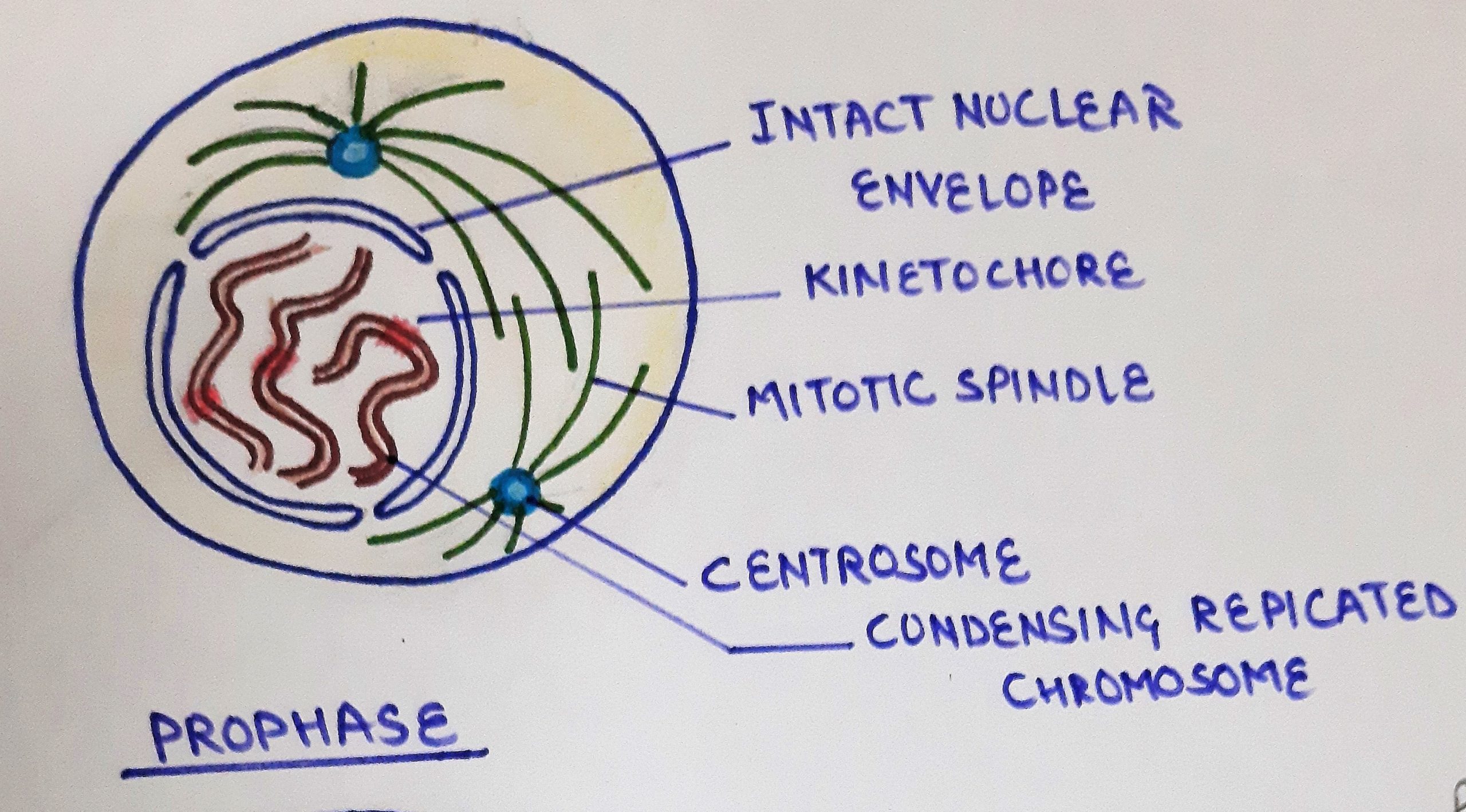
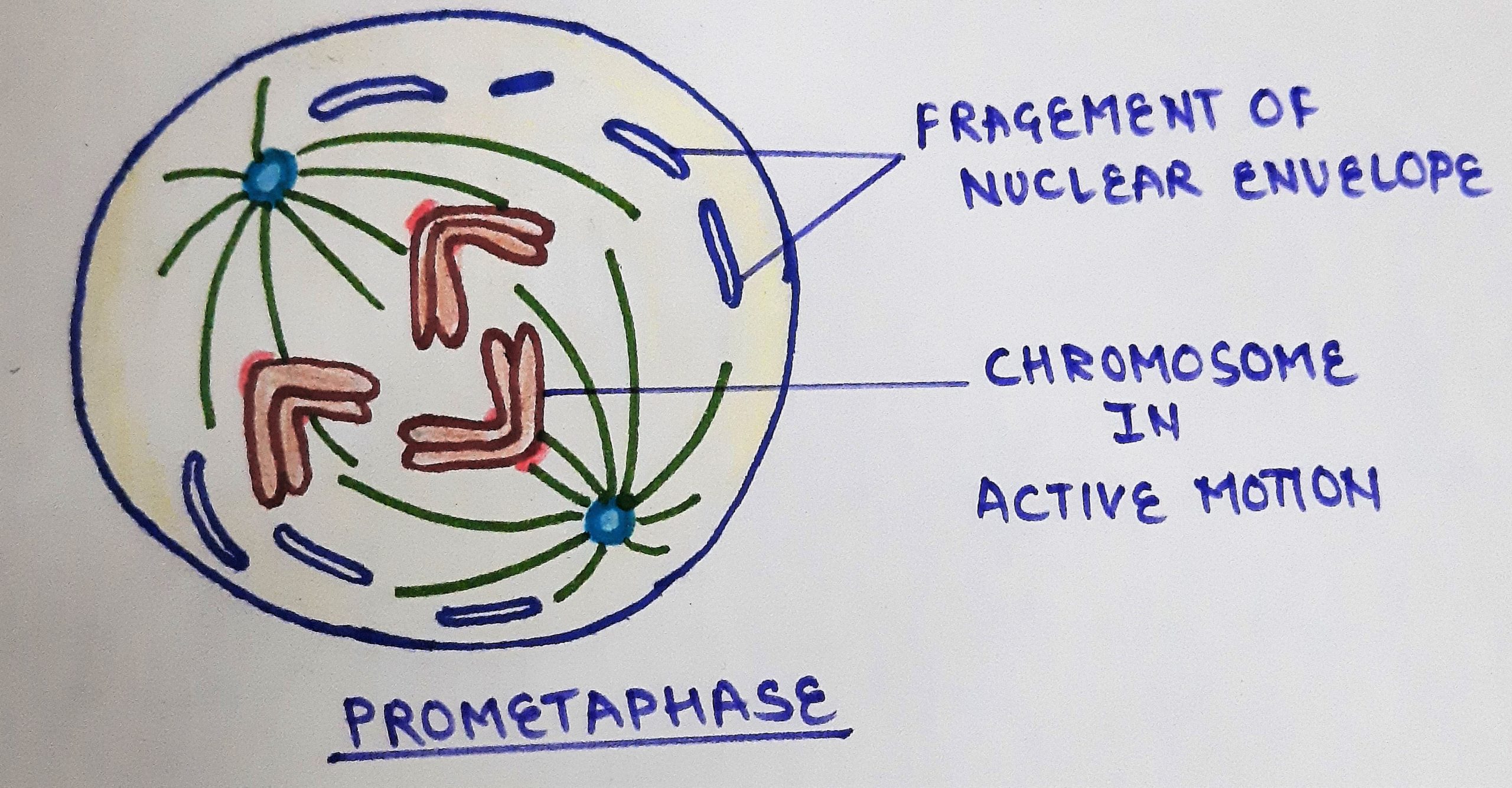
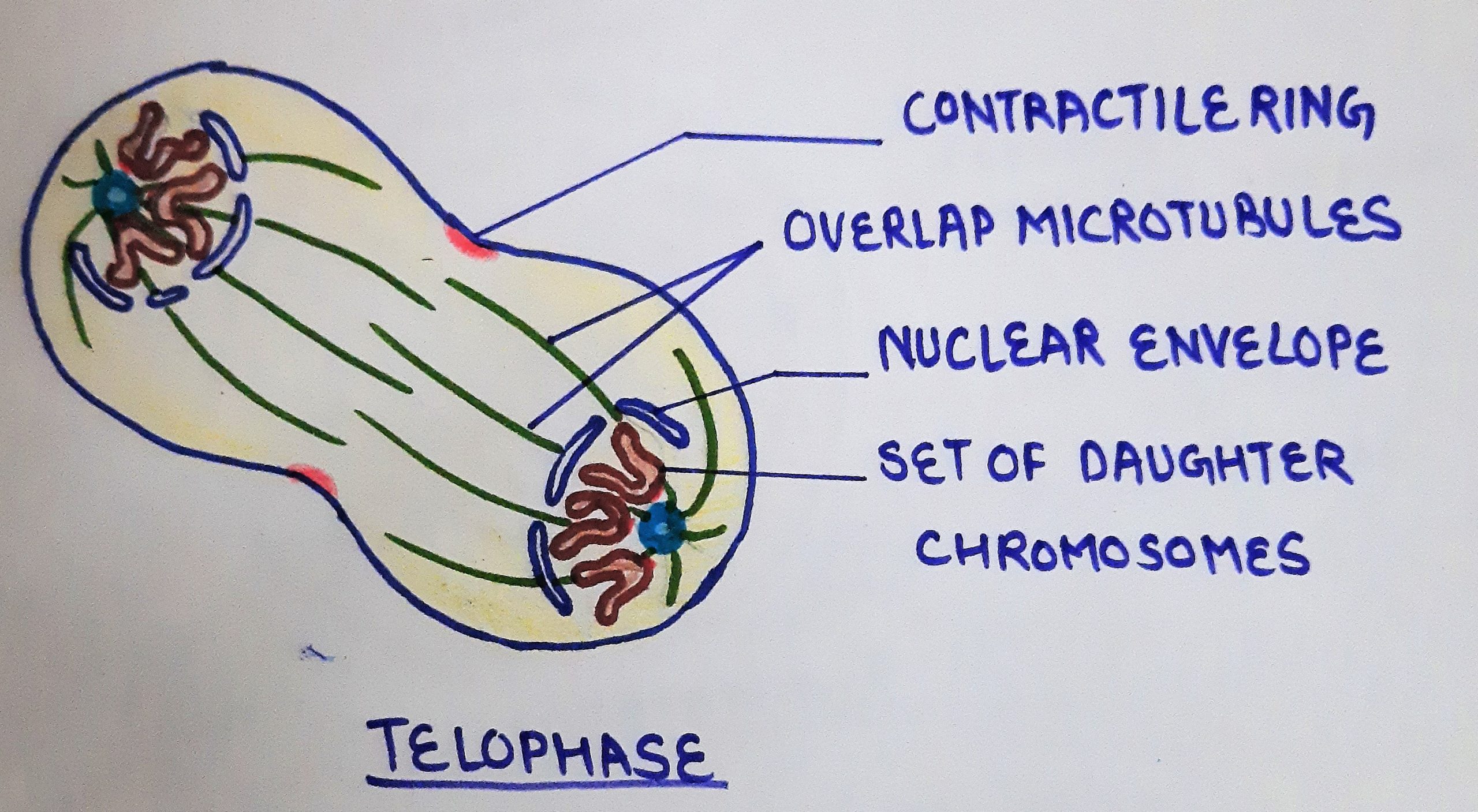

Thank you for making this summary, I am a high school teacher and it is provided to my students for reading. Greetings from Xonacatlàn, Mexico